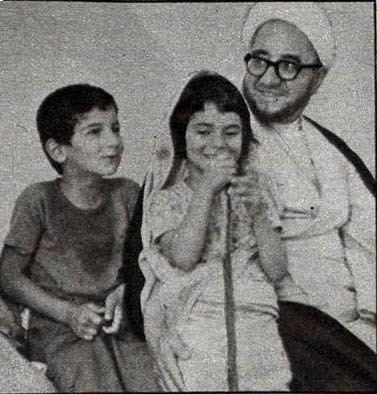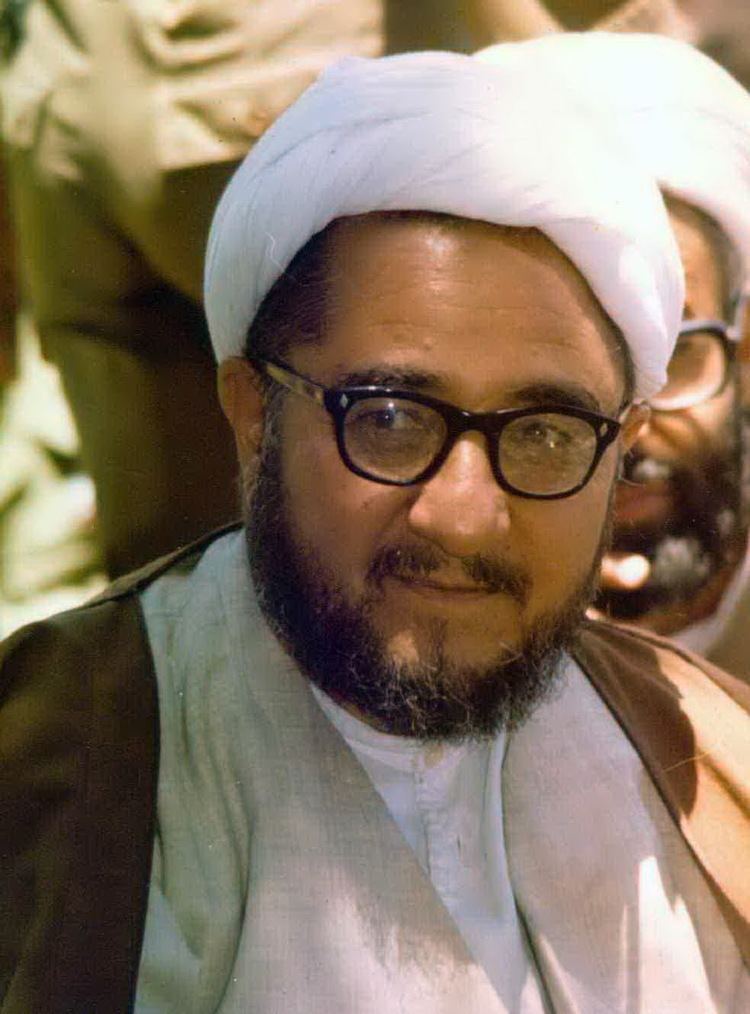Role Justice Nationality Iranian Name Sadegh Khalkhali | ||
People also search for Nader Jahanbani, Reza Shah, Fatemeh Sadeghi, Fatima al-Sughra Children Fatemeh Sadeghi, Mohammad Sadeghi | ||
Street tribunals of khomeyni executioner sadegh khalkhali
Mohammed Sadeq Givi Khalkhali (27 July 1926 – 26 November 2003) (Persian: Sādeq Xalxāli) was a Shia cleric of the Islamic Republic of Iran who is said to have "brought to his job as Chief Justice of the revolutionary courts a relish for summary execution" that earned him a reputation as Iran's "hanging judge". A farmer's son and ethnic Azeri born in Givi (Ardabil Province, Iran) in appearance Khalkhali was "a small, rotund man with a pointed beard, kindly smile, and a high-pitched giggle."
Contents
- Street tribunals of khomeyni executioner sadegh khalkhali
- Historic video of reza shah mausoleum ruined by ayatollah sadegh khalkhali
- Career and activities
- Later years and death
- Personal life
- References

Historic video of reza shah mausoleum ruined by ayatollah sadegh khalkhali
Career and activities

Khalkhali is known to have been one of Khomeini's circle of disciples as far back as 1955 and is reported to have reconstructed the former secret society of Islamic assassins known as the Fadayan-e Islam after its suppression, but was not a well-known figure to the public prior to the Islamic Revolution.

On 24 February 1979, Khalkhali was chosen by Ruhollah Khomeini to be the Sharia ruler (Persian: حاکم شرع) or head the newly established Revolutionary Courts, and to make Islamic rulings. In the early days of the revolution he sentenced to death "hundreds of former government officials" on charges such as "spreading corruption on earth" and "warring against God." Most of the condemned did not have access to a lawyer or a jury. Following the Iranian Revolution in 1979, Reza Shah's mausoleum was destroyed under the direction of Hujjat al-Islam Sadeq Khalkhali, which was sanctioned by Ayatollah Ruhollah Khomeini

Khalkhali is famous for ordering the executions of Amir Abbas Hoveida, the Shah's longtime prime minister, and Nematollah Nassiri, a former head of SAVAK. According to one report, after sentencing Hoveida to death
pleas for clemency poured in from all over the world and it was said that Khalkhali was told by telephone to stay the execution. Khalkhali replied that he would go and see what was happening. He then went to Hoveyda and either shot him himself or instructed a minion to do the deed. "I'm sorry," he told the person at the other end of the telephone, "the sentence has already been carried out."
Another version of the story has Khalkhali saying that while presiding over Hoveida's execution he made sure communication links between Qasr Prison and the outside world were severed, "to prevent any last-minute intercession on his behalf by Mehdi Bazargan, the provisional prime minister."
By trying Hoveida, Khalkhali effectively undermined the position of the provisional prime minister of the Islamic Revolution, the moderate Mehdi Bazargan, who disapproved of the Islamic Revolutionary Court and sought to establish the Revolution's reputation for justice and moderation.
Khalkhali was known for his antipathy towards pre-Islamic Iran. In 1979 he wrote a book "branding king Cyrus the Great a tyrant, a liar, and a homosexual" and "called for the destruction of the Tomb of Cyrus and remains of the two-thousand-year-old Persian palace in Shiraz, Fars Province, the Persepolis." According to an interview by Elaine Sciolino of Shiraz-based Ayatollah Majdeddin Mahallati, Khalkhali came to Persepolis with "a band of thugs" and gave an angry speech demanding that "the faithful torch the silk-lined tent city and the grandstand that the Shah had built," but was driven off by stone-throwing local residents.
At the height of the Iran hostage crisis in 1980 following the failure of the American rescue mission Operation Eagle Claw and crash of U.S. helicopters killing their crews, Khalkhali appeared on television "ordering the bags containing the dismembered limbs of the dead servicemen to be split open so that the blackened remains could be picked over and photographed," to the anger of American viewers.
Khalkhali later investigated and ordered the execution of many activists for federalism in Kurdistan and Turkmen Sahra, At the height of its activity Khalkhali's revolutionary court sentenced to death "up to 60 Kurds a day." Following that, in August 1980 he was asked by President Banisadr to take charge of trying and sentencing drug dealers, and sentenced hundreds to death. Ironically, one of the complaints of the revolution's leader and Khalkhali's superior, the Ayatollah Khomeini against the regime they had overthrown was that the Shah's far more limited number of executions of drug traffickers had been "inhuman."
In December 1980 his influence waned when he was forced to resign from the revolutionary courts because of his failure to account for $14 million seized through drug raids, confiscations, and fines, although some believe this as much the doing of President Bani-Sadr and the powerful head of the Islamic Republic Party Ayatollah Mohammad Beheshti "working behind the scenes" to remove a source of bad publicity for the revolution, as a matter of outright corruption.
In an interview, Khalkhali personally confirmed ordering more than 100 executions, although many sources believe that by the time of his death he had sent 8,000 men and women to their deaths. In some cases he was the executioner, where he executed his victims using machine guns. In an interview with the French newspaper Le Figaro he is quoted as saying, "If my victims were to come back on earth, I would execute them again, without exceptions."
Khalkhali was elected as representative for Qom in Islamic Consultative Assembly for two terms, serving for "more than a decade." In 1992, however, he was one of 39 incumbents from the Third Majles and 1000 or so candidates rejected that winter and spring by the Council of Guardians, which vets candidates. The reason given was a failure to show a "practical commitment to Islam and to the Islamic government," but it was thought by some to be a purge of radical critics of the conservatives in power.
Khalkhali sided with reformists after the election of President Mohammad Khatami in 1997, although he was never really accepted by the movement.
Later years and death
Khalkhali retired to Qom, where he taught Islamic seminarians.
He died in 2003, at the age of 77, of cancer and heart disease. At the time of his death, the speaker of Parliament, Mehdi Karoubi, praised the judge's performance in the early days of the revolution.
Personal life
Khalkhali was married and had a son and two daughters. His daughter, Fatemeh Sadeqi, though born in a restrictive Islamic environment, has attended university, attained Ph.D. and is now known for her secular views. She was the author of “Why We Say No to Forced Hijab” — a widely circulated 2008 essay.
